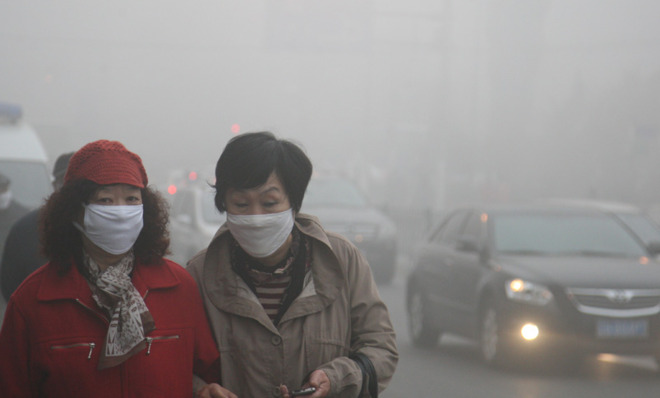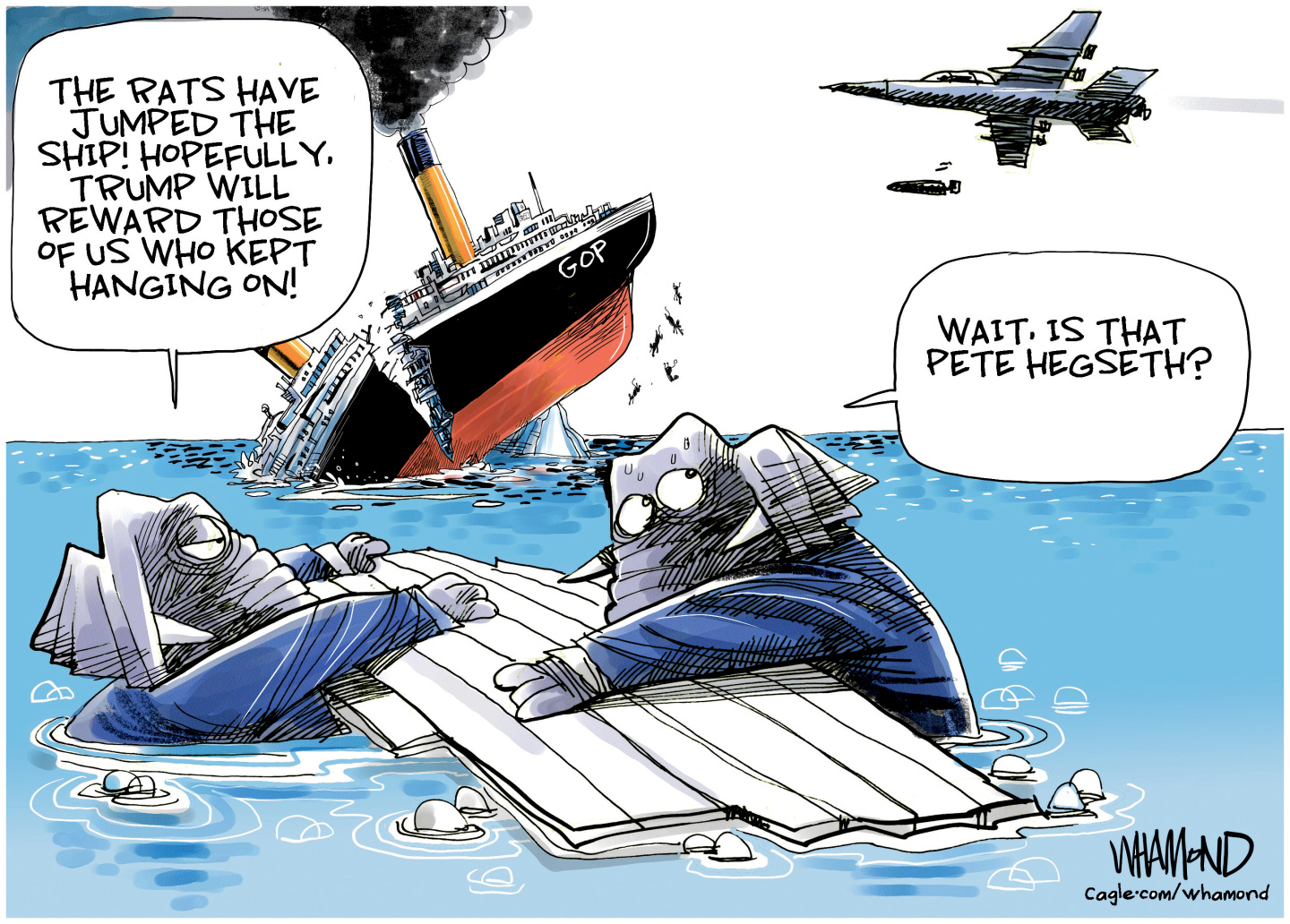China's massive pollution problem
Air pollution has made many cities in China "barely suitable for living," and is making the population sick — and angry

How bad is China's smog?
Sixteen of the world's 20 most polluted cities are in China. The air in some cities there is so bad that, at times, visibility drops to 30 feet, traffic slows to a crawl, and nearly everyone wears masks over their noses and mouths. In Harbin, a city of 11 million people, government officials recently shut down roads, schools, and the airport when air pollution levels hit 40 times the safe limit set by the World Health Organization (WHO). During the "airpocalypse" in Beijing earlier this year, the density of small, lung-penetrating particles reached 993 micrograms per cubic meter — a concentration normally not seen outside of forest fires. The U.S. Environmental Protection Agency (EPA) considers anything above 300 dangerous, and maxes out its scale at 500. The smog was so thick in Beijing — which English-speaking residents call "Greyjing" — that a factory building burned for three hours before anyone even noticed that it was in flames.
Why is China's air so polluted?
The Week
Escape your echo chamber. Get the facts behind the news, plus analysis from multiple perspectives.

Sign up for The Week's Free Newsletters
From our morning news briefing to a weekly Good News Newsletter, get the best of The Week delivered directly to your inbox.
From our morning news briefing to a weekly Good News Newsletter, get the best of The Week delivered directly to your inbox.
It's the result of two decades of runaway economic development unrestrained by strong air-pollution laws, a dramatic increase in car ownership, and China's overwhelming reliance on coal. China's cities were filled with bicycles as recently as the 1990s, but thanks to the explosive growth of the middle class, the Chinese now own more than 120 million cars and another 120 million motor vehicles of other kinds. Fuel standards, set by a government committee stacked with oil industry members, have not kept pace. Auto emissions, however, account for only about 25 percent of the problem. Most of the blame rests on coal. China burns almost as much coal as the rest of the world combined. Despite making large investments in renewable energy, China still depends on coal to meet nearly 70 percent of its power needs. While air pollution is almost always bad in northern China, it really soars after cities turn on their coal-fired collective heating systems for the winter "heating season." Temperature inversions often trap bad air for days or weeks.
What are the health effects?
They're widespread and severe. In 2010, air pollution contributed to 1.2 million premature deaths in China, according to a study. Hospitals in Harbin reported a 30 percent increase in patients with respiratory problems after air pollution spiked in the city. Lung cancer rates in China have climbed by 465 percent over the last three decades, despite there being no significant increase in smoking rates. Scientists say the pollution in northern cities is so severe that 500 million people's lives will be shortened by an average of 5.5 years.
How else is smog hurting China?
A free daily email with the biggest news stories of the day – and the best features from TheWeek.com
It's damaging the country's economy. In 2012, smog-related economic losses in four major Chinese cities totaled $1.08 billion, according to a study by Greenpeace and Peking University's School of Public Health. Largely in response to the "airpocalypse," tourism in Beijing has dropped by 50 percent this year, the Beijing Youth Daily reported last week. The pollution has also hurt efforts by Beijing-based businesses to recruit top foreign talent. More potential employees are demanding hardship pay for having to deal with the city's awful air quality. With studies connecting prenatal exposure to air pollutants with autism, depression, and long-term lung damage, many foreign and local parents are "second-guessing their living in Beijing," said family physician Richard Saint Cyr, who is based there.
Are Chinese citizens angry?
Yes, and they are increasingly willing to show it. Chinese netizens this year defied a government ban and began sharing hourly air quality measurements from the U.S. Embassy in downtown Beijing. Microblogging sites like Sina Weibo have served as forums for citizens to express their frustrations with China's air quality. "Our requirements aren't high," posted radio reporter Guo Yazhou. "We just want clean food, clean water, and clean air." The dissatisfaction has given rise to a growing environmental movement, with 30,000 to 50,000 "mass incidents" of protest every year, according to former Communist Party official Chen Jiping.
Is the Chinese government listening?
The grumbling has become too loud to ignore. This year, Chinese Premier Li Keqiang claimed that the country's smog made him "quite upset," while the state-run China Daily bluntly referred to major cities like Beijing as "barely suitable for living." That is a big change from 2011, when the state media referred to China's choking air pollution with the euphemism "heavy fog." Now, China says it will spend $817 billion on a plan to drastically cut pollution by 2017. While that might sound like real progress, provincial officials and state-owned businesses in China have a history of ignoring policies handed down from the central government. Critics also note that the new air-pollution plan calls for only a 2 percent reduction in coal consumption — the result of the Chinese coal industry's powerful influence. Tong Zhu, an air pollution specialist who travels between Princeton University and Beijing, sees political infighting in China's giant bureaucracy as the biggest impediment to progress. "There is technology available" to fix the problem, he told NPR. "I think as long as there is political willingness, the environmental situation can be drastically improved."
Fashion-forward protection
Not everybody hates the smog. Companies that make protective face masks are selling millions of them, surpassing records set after the SARS outbreak in 2003. On the streets of Beijing, it's strange to see someone not wearing a mask, designer Chen Dawei told the South China Morning Post. The result has been a boom in fashion-forward face masks adorned with everything from animal prints to counterfeit designer logos. Wealthy businessmen and government officials are also shelling out for indoor air purifiers, which sometimes sell in upscale showrooms for as much as $3,000. In the first half of 2013, IQAir, a Swiss company, saw sales of its luxury air purifiers triple in China. The trend, however, has bred some resentment from average Chinese families. Their annual income? About $2,100 a year.
Keith Wagstaff is a staff writer at TheWeek.com covering politics and current events. He has previously written for such publications as TIME, Details, VICE, and the Village Voice.
-
 Political cartoons for December 20
Political cartoons for December 20Cartoons Saturday’s political cartoons include drowning rats, the ACA, and more
-
 5 fairly vain cartoons about Vanity Fair’s interviews with Susie Wiles
5 fairly vain cartoons about Vanity Fair’s interviews with Susie WilesCartoon Artists take on demolition derby, alcoholic personality, and more
-
 Joanna Trollope: novelist who had a No. 1 bestseller with The Rector’s Wife
Joanna Trollope: novelist who had a No. 1 bestseller with The Rector’s WifeIn the Spotlight Trollope found fame with intelligent novels about the dramas and dilemmas of modern women